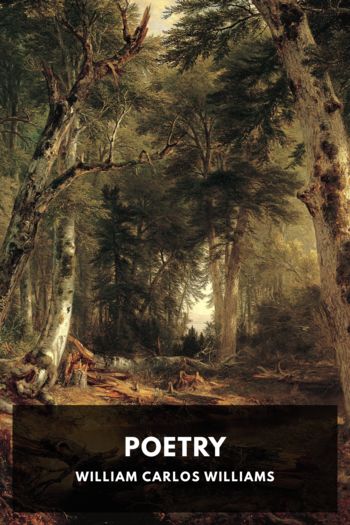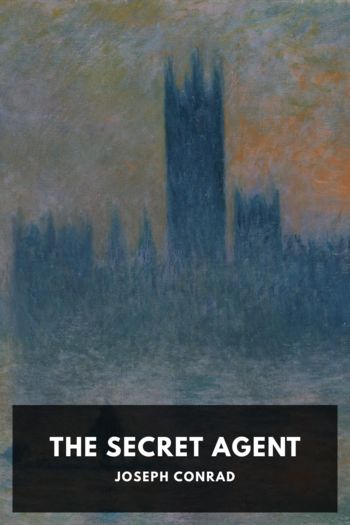Hidden History: Lost Civilizations, Secret Knowledge, and Ancient Mysteries, Brian Haughton [books you need to read .TXT] 📗

- Author: Brian Haughton
Book online «Hidden History: Lost Civilizations, Secret Knowledge, and Ancient Mysteries, Brian Haughton [books you need to read .TXT] 📗». Author Brian Haughton
The following year, the body of a man, naked but for an arm band made of fox fur and a thin rope around his neck, was unearthed in the same area. Lindow Man had been in his 20s when he died between A.D. 50 and A.D. 100. Examination of the body revealed that he had been hit twice on the crown of his head, probably with an axe, with sufficient force to detach chips of his skull into his brain. He had also been strangled using the leather garrote still remaining around his neck, and there was a gash on the throat, which may indicate that his throat had been cut. His hair had been trimmed (using scissors) two or three days before he met his death. The contents of his stomach included burned bread and traces of pollen from mistletoe, a plant sacred to the Celts. Celtic scholar and archaeologist Dr. Anne Ross believes that the threefold death suffered by Lindow Man, along with the blackened crust in his stomach, and the traces of mistletoe, suggest that the man was the victim of a Druidic sacrifice.
More than 80 bodies have been recovered from the bogs of Ireland in the past two centuries, seven of which have been radiocarbon dated. Unlike the rest of Northern Europe, the majority of these bodies belong to the late medieval or post-medieval period, though there are some from the Iron Age. One Iron Age example, radiocarbon dated
to between 470 and 120 B.C., is Gallagh Man, found by the O'Kelly family in 1821 at Gallagh, near Castleblakeney, County Galway. After they unearthed the body, the family would, for a small fee, resurrect Gallagh Man for visitors and then re-bury him again. This happened until 1829, when the body was taken to the National Museum. Gallagh Man was naked but for a deerskin cloak tied at the throat with a band of willow rods, which may have been used as a strangling device. As with many other bog bodies that suffered violence, his hair had been cropped short. He may have been a criminal and suffered public execution, as the body had been staked to the ground with pointed wooden sticks, possibly to prevent his soul from escaping, a practice known from some Danish bog bodies.
In 1978, the body of a girl aged between 25 and 30 was discovered in Meenybradden Bog, near Ardara, County Donegal, Ireland. The girl, with short cropped hair and eyelashes and eyelids still intact, had been wrapped in a woollen cloak and carefully placed in the grave. There was no evidence of violence on the body, which was radiocarbon dated to A.D. 1570. The cause of death, and why she was buried in the bog, is still a mystery.
Two further Irish bog bodies were found in 2003. The first was discovered in Clonycavan, County Meath, north of Dublin, and the second in Croghan, County Offaly, just 25 miles away. Old Croghan Man, as he has become known, was in his mid-20s and a giant at around 6-feet 6-inches tall. He has been dated between 362 B.C. and 175 B.C. Clonycavan Man, a young male around 5-feet 2-inches tall, dates from between 392 B.c. and 201 B.C. In common with other bog bodies, they appear to have been brutally tortured before their deaths, probably as ritual sacrifices. Old Croghan Man's nipples had been cut and he had been stabbed in the ribs. A cut on his arm indicates that he had tried to defend himself during the attack. There were also holes in both his upper arms, where a hazel rope withy had been passed through to bind him. He was later decapitated and dismembered before being buried in the bog. In contrast to his violent end, Croghan Man's body revealed that he had well-manicured nails and relatively smooth hands, which indicate somebody who had probably never performed any manual work; perhaps he was a priest or a member of the aristocracy. Clonycavan Man suffered a massive wound to the head, caused by a heavy axe that shattered his skull, and also several other injuries on his body. One particularly distinctive feature was his unusual raised hairstyle, for which he had used a kind of Iron Age hair gel, actually a form of resin that had probably come from south-western France or Spain.
Ned Kelly, keeper of Irish antiquities at the National Museum of Ireland, has developed a theory to explain why 40 bodies discovered in Irish bogland were made along tribal, political, and royal boundaries. His belief is that the burials are offerings to fertility gods by kings to guarantee a successful reign. This is certainly a possible explanation for many of the Irish bog bodies, but what of the rest of Northern Europe? The variety of different ways in which many of these people were killed would suggest something more than murder, prob
ably some kind of ritual sacrifice. Other motives can be gleaned from the Roman author Tacitus, writing in the early second century A.D. about the Germanic peoples. He mentions some interesting customs connected with crime and punishment in their culture, including how "cowards, shirkers, and those guilty of unnatural vices" (probably homosexuality and promiscuity) were forced down into the bog under a wicker hurdle. He also states that adulterous wives were stripped naked, had their heads shaved, and were turned out of the house and flogged through the village. There are certainly indications from Tacitus that suggest that many of the victims in the bogs had broken some law or taboo of the society for which they were executed.
Another interesting detail is the unusual proportion of bog bodies with physical defects of some kind. One of the





Comments (0)